 Search by Keyword
|
“IF I NEEDED SOMEONE”
(George Harrison)
“I first saw The Beatles on television in 1963, in New York. It was the clip with all the screaming girls. I loved the music! I got it right away and started playing folk songs with a Beatle beat down in Greenwich Village.”
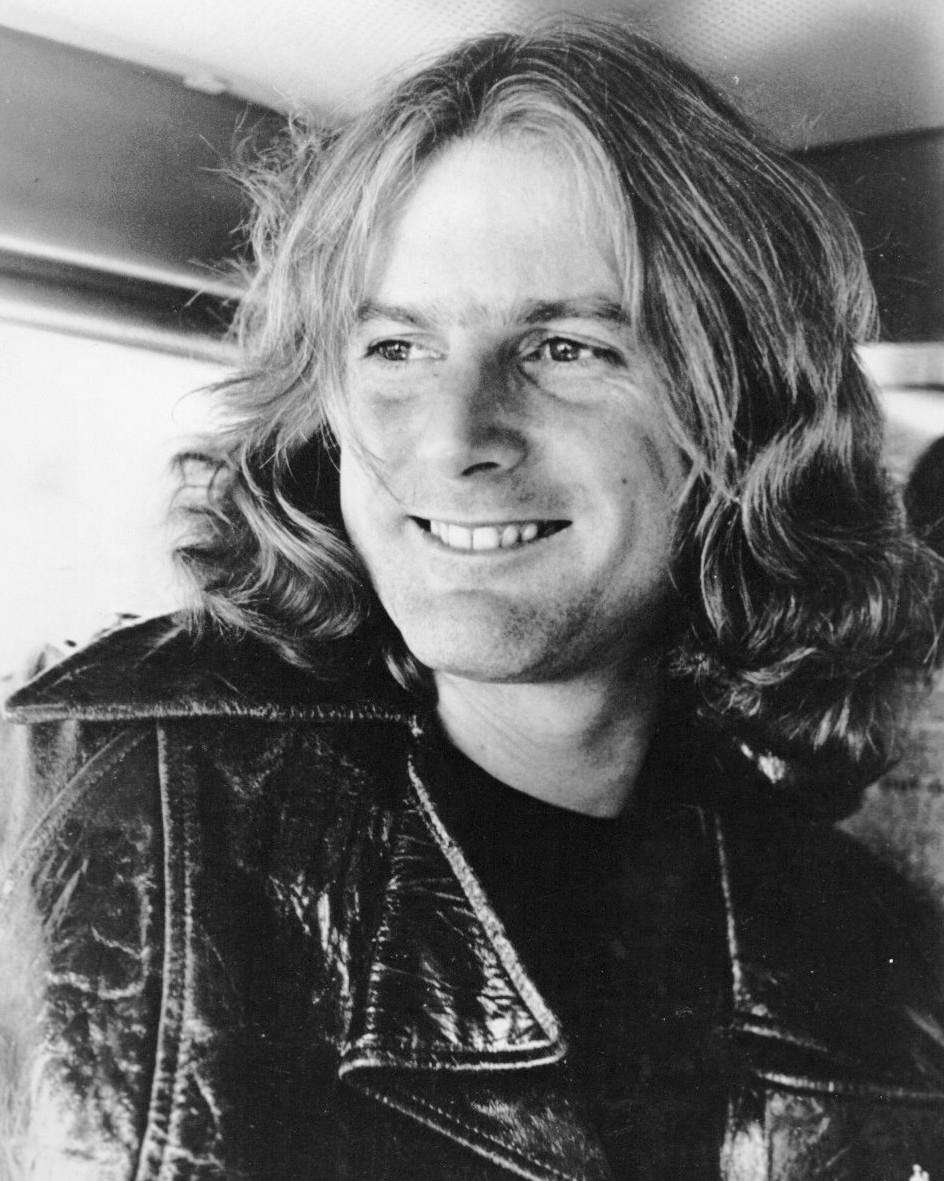 This quote from Roger McGuinn of The Byrds is typical of the majority of the popular musical artists that emerged in the mid sixties and beyond. In fact, a large percentage of professional musicians in any era after 1964 will at least give partial credit to the influence The Beatles had on them during their formative years. This quote from Roger McGuinn of The Byrds is typical of the majority of the popular musical artists that emerged in the mid sixties and beyond. In fact, a large percentage of professional musicians in any era after 1964 will at least give partial credit to the influence The Beatles had on them during their formative years.
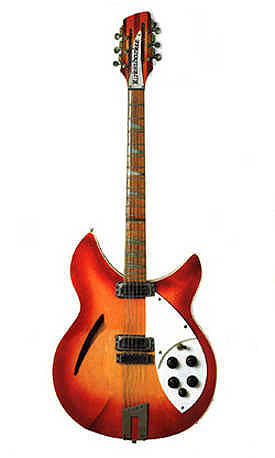 However, what is unique regarding The Byrds is that not only did The Beatles inclurence their sound, the Rickenbacker 12-string twang being the most noteworthy comparison, but The Byrds were also instrumental in being an inspiration to The Beatles. George Harrison in particular was so taken by their sound that he wrote his “Rubber Soul” classic “If I Needed Someone” with The Byrds in mind. The Beatles were always keen to mimic what they liked in modern music but, since their appearance on the scene in the mid sixties, many times they ended up mimicking someone who was mimicking them back! However, what is unique regarding The Byrds is that not only did The Beatles inclurence their sound, the Rickenbacker 12-string twang being the most noteworthy comparison, but The Byrds were also instrumental in being an inspiration to The Beatles. George Harrison in particular was so taken by their sound that he wrote his “Rubber Soul” classic “If I Needed Someone” with The Byrds in mind. The Beatles were always keen to mimic what they liked in modern music but, since their appearance on the scene in the mid sixties, many times they ended up mimicking someone who was mimicking them back!
Songwriting History
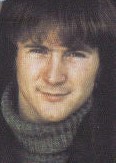 The Beatles were very impressed with the music of The Byrds – so much so that, when they had a few days rest in Los Angeles from August 23rd through the 27th between stops of their 1965 American tour, they attended a recording session by the group. This may very well have been arranged by The Beatles former press agent Derek Taylor who at that point was a publicity agent for The Byrds. The Beatles had become quite social with members of The Byrds as well, inviting David Crosby of the band to their vacation house at 2850 Benedict Canyon Road during these few days. The Beatles were very impressed with the music of The Byrds – so much so that, when they had a few days rest in Los Angeles from August 23rd through the 27th between stops of their 1965 American tour, they attended a recording session by the group. This may very well have been arranged by The Beatles former press agent Derek Taylor who at that point was a publicity agent for The Byrds. The Beatles had become quite social with members of The Byrds as well, inviting David Crosby of the band to their vacation house at 2850 Benedict Canyon Road during these few days.
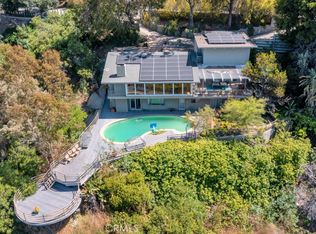 Undoubtedly because of being impressed by the group's music, George Harrison wrote a song specifically inspired by one particular song of theirs. “It was based on the twelve-string figure from ‘The Bells Of Rhymney’ by The Byrds,” Harrison explained in New Musical Express shortly after "If I Needed Someone" was released. While he had stated around this time that he usually takes “about three months” to write a song, it seems apparent that, because of The Beatles’ recent infatuation with The Byrds, he probably narrowed this one down to about two months (estimating from August to October of 1965 when the song was recorded). Undoubtedly because of being impressed by the group's music, George Harrison wrote a song specifically inspired by one particular song of theirs. “It was based on the twelve-string figure from ‘The Bells Of Rhymney’ by The Byrds,” Harrison explained in New Musical Express shortly after "If I Needed Someone" was released. While he had stated around this time that he usually takes “about three months” to write a song, it seems apparent that, because of The Beatles’ recent infatuation with The Byrds, he probably narrowed this one down to about two months (estimating from August to October of 1965 when the song was recorded).
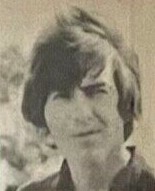 George also stated that the song “was like a million other songs written around one chord, a D chord actually.” In 1980 he elaborated even further about its formation derived from the D chord: “If you move your fingers about you get various little melodies. That guitar line, or variations on it, is found in many a song, and it amazes me that people still find new permutations of the same notes.” George also stated that the song “was like a million other songs written around one chord, a D chord actually.” In 1980 he elaborated even further about its formation derived from the D chord: “If you move your fingers about you get various little melodies. That guitar line, or variations on it, is found in many a song, and it amazes me that people still find new permutations of the same notes.”
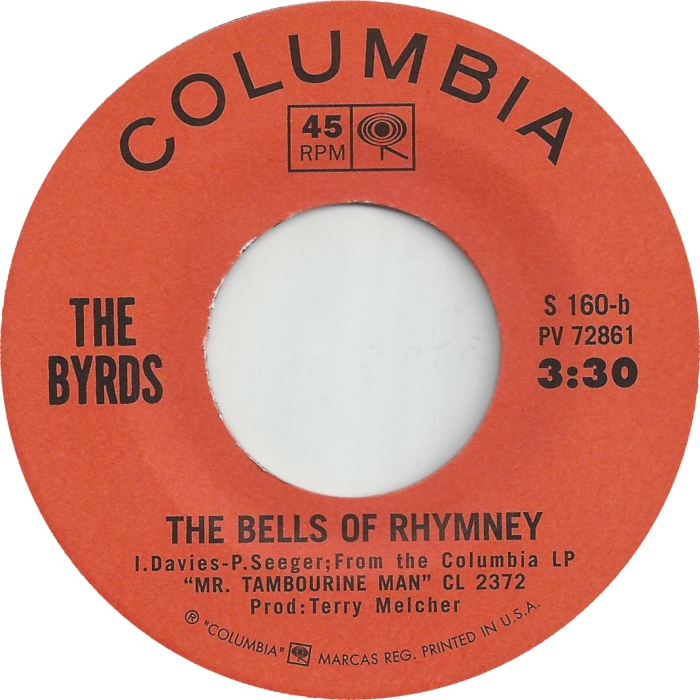 Harrison never concealed the fact that he borrowed the exact guitar phrasings from “The Bells Of Rhymney,” instead considering it a tribute of sorts. “George was very open about it,” remembers Roger (Jim) McGuinn. Referring to an acetate copy of The Beatles recording of “If I Needed Someone,” Roger continues, “He sent it to us in advance and said, ‘This is for Jim’ – because of that lick.” Harrison never concealed the fact that he borrowed the exact guitar phrasings from “The Bells Of Rhymney,” instead considering it a tribute of sorts. “George was very open about it,” remembers Roger (Jim) McGuinn. Referring to an acetate copy of The Beatles recording of “If I Needed Someone,” Roger continues, “He sent it to us in advance and said, ‘This is for Jim’ – because of that lick.”
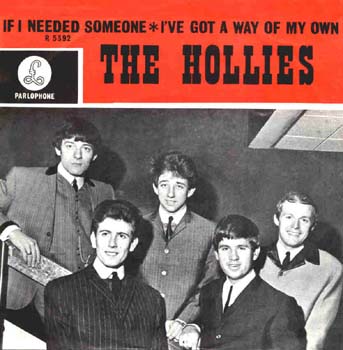 Another group that received an early recording of "If I Needed Someone" was The Hollies. They proceeded to quickly record their own rendition of the song and release it as their next British single on December 3rd, 1965, the exact day that The Beatles' version was released in the UK on their "Rubber Soul" album. Although The Hollies only took the song to #20 on the British chart, which was quite lower than many of their previous hits, it became the first George Harrison composition to make the charts. Another group that received an early recording of "If I Needed Someone" was The Hollies. They proceeded to quickly record their own rendition of the song and release it as their next British single on December 3rd, 1965, the exact day that The Beatles' version was released in the UK on their "Rubber Soul" album. Although The Hollies only took the song to #20 on the British chart, which was quite lower than many of their previous hits, it became the first George Harrison composition to make the charts.
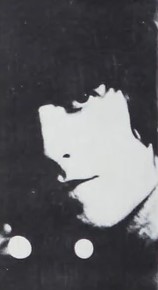 Not that George was pleased about this. Speculation circulated that he had actually written the song for The Hollies, which was a rumor he was quick to set straight. “I didn’t write it for The Hollies,” he stated at the time. “They’ve done it as their new single, but their version is not my kind of music. I think it’s rubbish the way they’ve done it. They’ve spoilt it. They are all right musically, but the way they do their records, they sound like session men who’ve just got together in a studio without ever seeing each other before. Technically they’re good, but that’s all!” I don’t know – it sounds pretty good to me, especially the trademark Hollies harmonies and the excellent drum work. Not that George was pleased about this. Speculation circulated that he had actually written the song for The Hollies, which was a rumor he was quick to set straight. “I didn’t write it for The Hollies,” he stated at the time. “They’ve done it as their new single, but their version is not my kind of music. I think it’s rubbish the way they’ve done it. They’ve spoilt it. They are all right musically, but the way they do their records, they sound like session men who’ve just got together in a studio without ever seeing each other before. Technically they’re good, but that’s all!” I don’t know – it sounds pretty good to me, especially the trademark Hollies harmonies and the excellent drum work.
Recording History
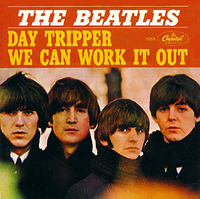 George had this Byrds-ish song written and ready to record early on during the sessions for “Rubber Soul.” Therefore, on October 16th, 1965, which was the third day of recording sessions for the album, George premiered the song in EMI Studio Two to record the rhythm track. This didn’t happen, though, until the new Lennon / McCartney masterpiece “Day Tripper” was fully complete and ready to adorn their next single. Approximately the first eight-and-a-half hours of this day were spent perfecting this gem, while the last hour, from 11 pm till midnight, was deemed suitable for rehearsing and then recording "take one" of the rhythm track for "If I Needed Someone." George had this Byrds-ish song written and ready to record early on during the sessions for “Rubber Soul.” Therefore, on October 16th, 1965, which was the third day of recording sessions for the album, George premiered the song in EMI Studio Two to record the rhythm track. This didn’t happen, though, until the new Lennon / McCartney masterpiece “Day Tripper” was fully complete and ready to adorn their next single. Approximately the first eight-and-a-half hours of this day were spent perfecting this gem, while the last hour, from 11 pm till midnight, was deemed suitable for rehearsing and then recording "take one" of the rhythm track for "If I Needed Someone."
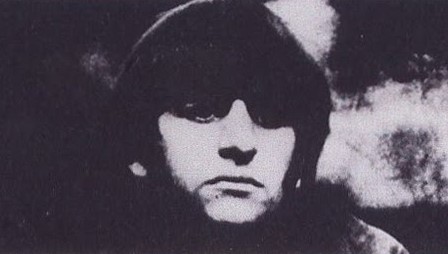 They apparently hit the nail on the head the first time the tapes were rolling, the rhythm track comprising George on his brand new Rickenbacker 12-string guitar (with a capo applied to the seventh fret), John on rhythm guitar, Paul on Rickenbacker bass and Ringo on drums. Some sources claim that producer George Martin also played harmonium on this rhythm track although it can’t be detected in the finished product. With much overdubbing to be done, they left it for another day. They apparently hit the nail on the head the first time the tapes were rolling, the rhythm track comprising George on his brand new Rickenbacker 12-string guitar (with a capo applied to the seventh fret), John on rhythm guitar, Paul on Rickenbacker bass and Ringo on drums. Some sources claim that producer George Martin also played harmonium on this rhythm track although it can’t be detected in the finished product. With much overdubbing to be done, they left it for another day.
 This other day was their very next session, which was on October 18th, 1965 in EMI Studio Two. A little bit over three hours were utilized on this day, from 2:30 to 5:45 pm, the first ninety minutes or so being used to complete what appeared to be the priority of the day, the overdubs required to finish “If I Needed Someone.” Harrison recorded his lead vocals and then double-tracked them, which ended up on track three of the four-track tape. This other day was their very next session, which was on October 18th, 1965 in EMI Studio Two. A little bit over three hours were utilized on this day, from 2:30 to 5:45 pm, the first ninety minutes or so being used to complete what appeared to be the priority of the day, the overdubs required to finish “If I Needed Someone.” Harrison recorded his lead vocals and then double-tracked them, which ended up on track three of the four-track tape.
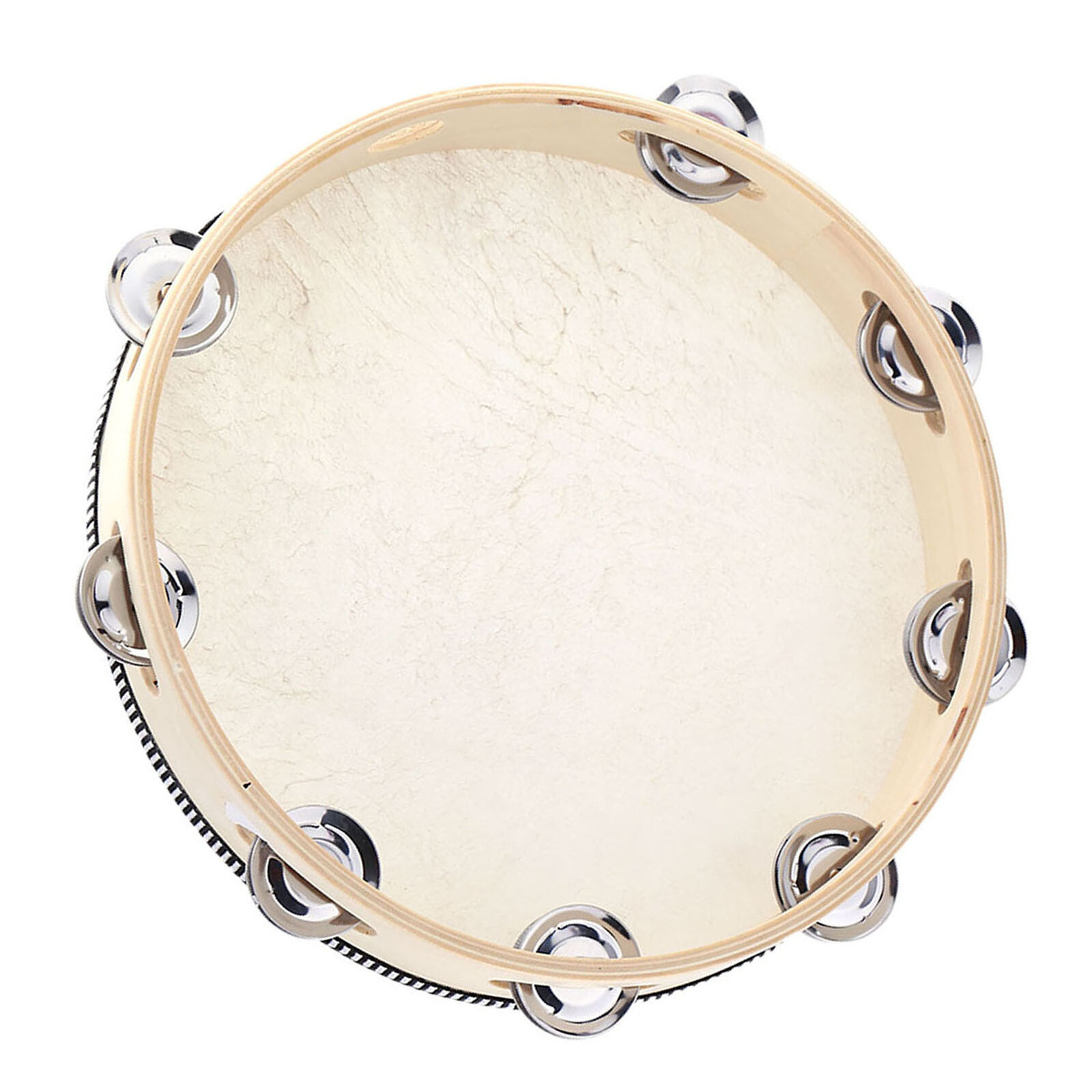 John and Paul then sang harmony vocals and double-tracked them as well, adding a low bass vocal during the instrumental section of the song. These vocals all ended up on track four of the four-track tape. Harrison also overdubbed more jangly guitar leads on his capoed Rickenbacker 12-string guitar throughout the song with Ringo overdubbing some nice tambourine work on the same track. By about 4 pm, the song was complete, the next hour-and-a-half or so utilized for rehearsing and recording another “Rubber Soul” masterpiece, “In My Life.” John and Paul then sang harmony vocals and double-tracked them as well, adding a low bass vocal during the instrumental section of the song. These vocals all ended up on track four of the four-track tape. Harrison also overdubbed more jangly guitar leads on his capoed Rickenbacker 12-string guitar throughout the song with Ringo overdubbing some nice tambourine work on the same track. By about 4 pm, the song was complete, the next hour-and-a-half or so utilized for rehearsing and recording another “Rubber Soul” masterpiece, “In My Life.”
 The only mono mix of “If I Needed Someone” was made on October 25th, 1965 in the control room of EMI Studio Two by producer George Martin and engineers Norman Smith and Ken Scott. This mix was not available in the US at the time since Capitol Records decided to combine both channels of the stereo mix to create their own mono mix. Interestingly, as a surviving acetate pressing shows, "If I Needed Someone" was originally slated to be the fourth song on side one of "Rubber Soul" after "In My Life." Sometime afterwards, a decision was made to relegate George's song to nearly the end of side two of the British album, bringing his "Think For Yourself" to side one instead. The only mono mix of “If I Needed Someone” was made on October 25th, 1965 in the control room of EMI Studio Two by producer George Martin and engineers Norman Smith and Ken Scott. This mix was not available in the US at the time since Capitol Records decided to combine both channels of the stereo mix to create their own mono mix. Interestingly, as a surviving acetate pressing shows, "If I Needed Someone" was originally slated to be the fourth song on side one of "Rubber Soul" after "In My Life." Sometime afterwards, a decision was made to relegate George's song to nearly the end of side two of the British album, bringing his "Think For Yourself" to side one instead.
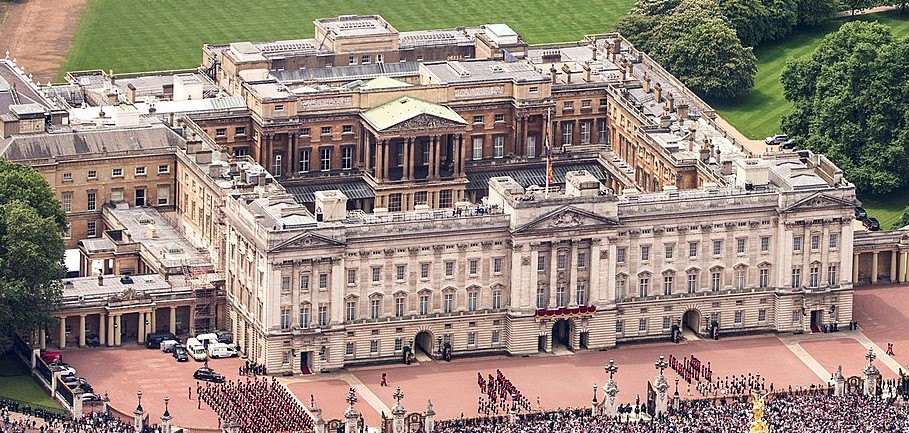 The first stereo mix of "If I Needed Someone" was done the following day, October 26th, 1965, while The Beatles were busy receiving their MBE’s at Buckingham Palace. This first mix was also made in the control room of EMI Studio Two by George Martin, Norman Smith and 2nd engineer Ron Pender. The entire rhythm track is heard in the left channel except for the bleed-through of the studio speaker while all the vocal tracks were being recorded, all of which is heard entirely in the right channel. In fact, there is some noticeable “phasing” that can be detected at times in the right channel of the stereo mix that possibly appears due to the bleed-through of the studio speaker during the multiple vocal overdubs. The first stereo mix of "If I Needed Someone" was done the following day, October 26th, 1965, while The Beatles were busy receiving their MBE’s at Buckingham Palace. This first mix was also made in the control room of EMI Studio Two by George Martin, Norman Smith and 2nd engineer Ron Pender. The entire rhythm track is heard in the left channel except for the bleed-through of the studio speaker while all the vocal tracks were being recorded, all of which is heard entirely in the right channel. In fact, there is some noticeable “phasing” that can be detected at times in the right channel of the stereo mix that possibly appears due to the bleed-through of the studio speaker during the multiple vocal overdubs.
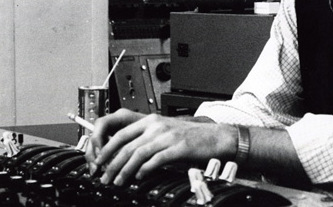 The lead guitar / tambourine overdub track is also panned entirely to the left channel except during the instrumental section and conclusion of the song where it was quickly switched over entirely to the right channel. The switch is so abrupt that the very beginning of the lead guitar / tambourine track in the conclusion is still heard in the left channel before it makes it over to the right. The lead guitar / tambourine overdub track is also panned entirely to the left channel except during the instrumental section and conclusion of the song where it was quickly switched over entirely to the right channel. The switch is so abrupt that the very beginning of the lead guitar / tambourine track in the conclusion is still heard in the left channel before it makes it over to the right.
 A segment of "If I Needed Someone," as primitively recorded on Ringo's cassette recorder at one of their five shows at the Nippon Budokan Hall in Tokyo, Japan between June 30th and July 2nd, 1966, was reviewed by The Beatles in their Tokyo Hilton Hotel room afterwards. The band's review of this recording was also caught on another tape, including Lennon asking manager Brian Epstein what he thought of the show. Ringo's cassette, along with two others from this 1966 international tour, fetched $16,000 in March of 2024 at an Omega auction in Newton-Le-Willows, England. A segment of "If I Needed Someone," as primitively recorded on Ringo's cassette recorder at one of their five shows at the Nippon Budokan Hall in Tokyo, Japan between June 30th and July 2nd, 1966, was reviewed by The Beatles in their Tokyo Hilton Hotel room afterwards. The band's review of this recording was also caught on another tape, including Lennon asking manager Brian Epstein what he thought of the show. Ringo's cassette, along with two others from this 1966 international tour, fetched $16,000 in March of 2024 at an Omega auction in Newton-Le-Willows, England.
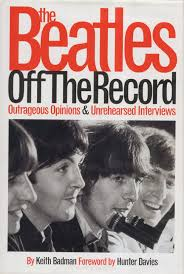 Interestingly, The Beatles' final live paid performance on August 29th, 1966, this being at Candlestick Park in San Francisco, California, included "If I Needed Someone" as their third song. As detailed in Keith Badman's 2001 book "The Beatles Off The Record," the group's press officer Tony Barrow recalls: "There was a sort of end of term spirit thing going on, and there was also this kind of feeling amongst all of us around The Beatles, that this might just be the last concert that they will ever do. I then remember Paul, casually, at the very last minute, saying, 'Have you got your cassette recorder with you?' and I said, 'Yes, of course.' Paul then said, 'Tape it, will you? Tape the show,' which I did, literally just holding the microphone up in the middle of the field. As a personal souvenir of the occasion, it was a very nice thing to have." Even though Tony Barrow insists that he only made one copy of the tape, which he had locked in a drawer in his London office, and gave the original to Paul, this recording has been available on bootleg releases throughout the years. Interestingly, The Beatles' final live paid performance on August 29th, 1966, this being at Candlestick Park in San Francisco, California, included "If I Needed Someone" as their third song. As detailed in Keith Badman's 2001 book "The Beatles Off The Record," the group's press officer Tony Barrow recalls: "There was a sort of end of term spirit thing going on, and there was also this kind of feeling amongst all of us around The Beatles, that this might just be the last concert that they will ever do. I then remember Paul, casually, at the very last minute, saying, 'Have you got your cassette recorder with you?' and I said, 'Yes, of course.' Paul then said, 'Tape it, will you? Tape the show,' which I did, literally just holding the microphone up in the middle of the field. As a personal souvenir of the occasion, it was a very nice thing to have." Even though Tony Barrow insists that he only made one copy of the tape, which he had locked in a drawer in his London office, and gave the original to Paul, this recording has been available on bootleg releases throughout the years.
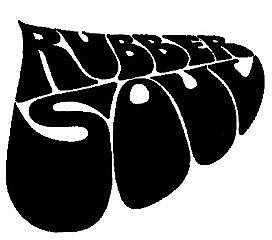 A second stereo mix of the song was done in 1986 by George Martin in preparation for the “Rubber Soul” compact disc. All of the above elements are ultimately the same in this new mix, the one difference being the positioning of all the vocal tracks, which are panned mostly to the right channel but can also be detected in the left channel as well. A second stereo mix of the song was done in 1986 by George Martin in preparation for the “Rubber Soul” compact disc. All of the above elements are ultimately the same in this new mix, the one difference being the positioning of all the vocal tracks, which are panned mostly to the right channel but can also be detected in the left channel as well.
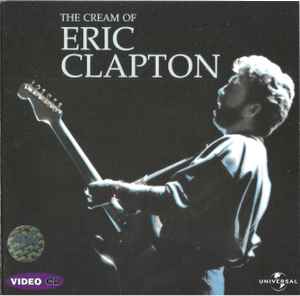 Also to be mentioned here is the live recording of "If I Needed Someone" done sometime in the first half of December, 1991, by George Harrison and his band. This recording appears on the 1992 album “Live In Japan” and features two extended solo sections performed by band-mate Eric Clapton. Also to be mentioned here is the live recording of "If I Needed Someone" done sometime in the first half of December, 1991, by George Harrison and his band. This recording appears on the 1992 album “Live In Japan” and features two extended solo sections performed by band-mate Eric Clapton.
 Sometime in 2023, Giles Martin (son of producer George Martin) was given the task of creating a "demix remix" of "If I Needed Someone" for inclusion as a new track on the 50th Anniversary edition of the compilation album "The Beatles / 1962 - 1966" (aka "The Red Album"). With Peter Jackson's AI technology at his disposal, Giles Martin was able to use this "new machine-learning techology" in order that "individual elements that were put to tape...and were therefore impossible to separate" could now be "untangled, allowing Giles (Martin) to put the original recordings back together with even greater clarity and impact," as stated by John Harris in the liner notes of the above mentioned album. The results were very good, the vibrancy of George's guitar being of particular note. Sometime in 2023, Giles Martin (son of producer George Martin) was given the task of creating a "demix remix" of "If I Needed Someone" for inclusion as a new track on the 50th Anniversary edition of the compilation album "The Beatles / 1962 - 1966" (aka "The Red Album"). With Peter Jackson's AI technology at his disposal, Giles Martin was able to use this "new machine-learning techology" in order that "individual elements that were put to tape...and were therefore impossible to separate" could now be "untangled, allowing Giles (Martin) to put the original recordings back together with even greater clarity and impact," as stated by John Harris in the liner notes of the above mentioned album. The results were very good, the vibrancy of George's guitar being of particular note.
Song Structure and Style
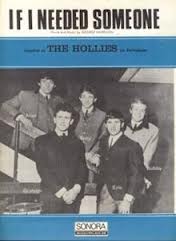 When reading the above quote from George that the song was written around the D major chord, musicians will very quickly point out that the key of “If I Needed Someone” isn’t D at all but A major. While this is obviously true, observing their live performances of the song points out a noticeable fact. George Harrison does play the song with the fingering of a D major chord when the home key is played but with a capo placed quite high on the neck of his guitar. John plays his guitar without a capo using the A major chord fingering. Obviously the song was written in D but then altered to A, possibly to get the song in a key more in the range for George to sing. When reading the above quote from George that the song was written around the D major chord, musicians will very quickly point out that the key of “If I Needed Someone” isn’t D at all but A major. While this is obviously true, observing their live performances of the song points out a noticeable fact. George Harrison does play the song with the fingering of a D major chord when the home key is played but with a capo placed quite high on the neck of his guitar. John plays his guitar without a capo using the A major chord fingering. Obviously the song was written in D but then altered to A, possibly to get the song in a key more in the range for George to sing.
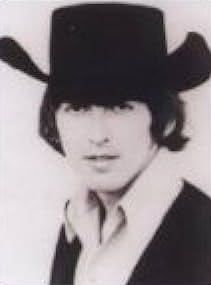 The structure is somewhat typical for Beatles compositions up to this point, consisting of verses and a repeating bridge. The actual structure amounts to ‘verse/ verse/ bridge/ verse/ verse (instrumental)/ verse/ bridge/ verse’ (or aabaaaba). Note that, with the instrumental section of the song, an unusual three-verses-in-a-row appears. Added to the mix is a short intro and nearly similar conclusion. The structure is somewhat typical for Beatles compositions up to this point, consisting of verses and a repeating bridge. The actual structure amounts to ‘verse/ verse/ bridge/ verse/ verse (instrumental)/ verse/ bridge/ verse’ (or aabaaaba). Note that, with the instrumental section of the song, an unusual three-verses-in-a-row appears. Added to the mix is a short intro and nearly similar conclusion.
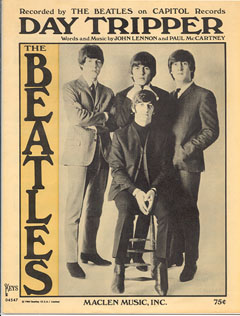 The intro is four measures long and consists of a two-measure guitar riff that is repeated twice. The first time it is heard played by the guitar alone (although double-tracked) not unlike “Day Tripper” which was recorded on this same day. On the third measure, therefore being the second time the riff is played, the full band appears to take us into the main body of the song. An overdubbed tambourine also begins at this point which continues through the rest of the song. However, now it is only being accented on the two- and four-beats of each measure. The intro is four measures long and consists of a two-measure guitar riff that is repeated twice. The first time it is heard played by the guitar alone (although double-tracked) not unlike “Day Tripper” which was recorded on this same day. On the third measure, therefore being the second time the riff is played, the full band appears to take us into the main body of the song. An overdubbed tambourine also begins at this point which continues through the rest of the song. However, now it is only being accented on the two- and four-beats of each measure.
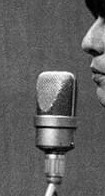 The first verse begins immediately afterwards, this verse being eight measures long. It starts with Harrison singing solo (although double-tracked) directly on the downbeat of the very first measure. Funnily enough, this word “if,” which is also heard in the sixth measure, and the word “you’re” that is heard on the downbeat of the third measure, are the only words that are sung on a straight beat. All of the remainder of the lyrics are sung on the off-beat, or in syncopation. While the melody line George is singing is engaging, it only comprises a range of four notes being sung mostly in a "stair step" (up and down) pattern. The first verse begins immediately afterwards, this verse being eight measures long. It starts with Harrison singing solo (although double-tracked) directly on the downbeat of the very first measure. Funnily enough, this word “if,” which is also heard in the sixth measure, and the word “you’re” that is heard on the downbeat of the third measure, are the only words that are sung on a straight beat. All of the remainder of the lyrics are sung on the off-beat, or in syncopation. While the melody line George is singing is engaging, it only comprises a range of four notes being sung mostly in a "stair step" (up and down) pattern.
 Other interesting features of this verse are the change to G in the fifth and sixth measures. While both guitars make this change, Paul’s bass playing continues the same rising-and-falling pattern that he's been playing while the A chord has been heard throughout the verse thus far. Ringo spices up the sixth measure with accented eighth notes on his snare and bass drum while the title of the song is being sung, climaxing with a cymbal crash on the downbeat of the seventh measure. Also, when the title of the song is heard, it is sung in three-part harmony by George, Paul and (prominently) John. During all this time, the beginning guitar riff is continued as a mimic to the melody line that George is singing. Other interesting features of this verse are the change to G in the fifth and sixth measures. While both guitars make this change, Paul’s bass playing continues the same rising-and-falling pattern that he's been playing while the A chord has been heard throughout the verse thus far. Ringo spices up the sixth measure with accented eighth notes on his snare and bass drum while the title of the song is being sung, climaxing with a cymbal crash on the downbeat of the seventh measure. Also, when the title of the song is heard, it is sung in three-part harmony by George, Paul and (prominently) John. During all this time, the beginning guitar riff is continued as a mimic to the melody line that George is singing.
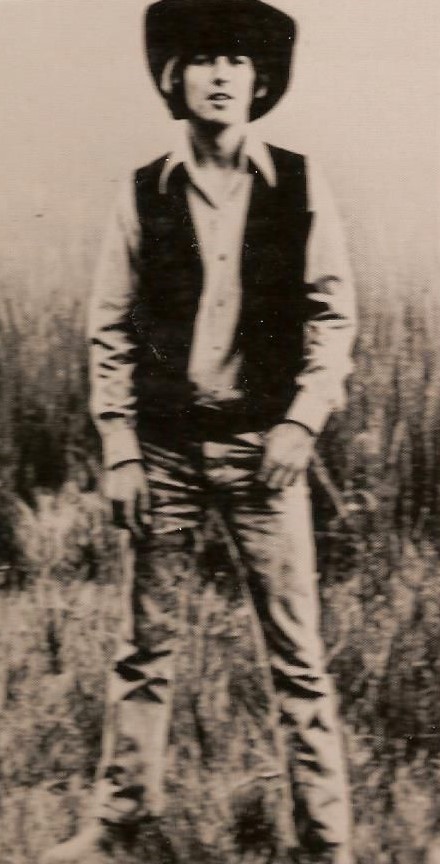 Another eight-measure verse follows, this one being identical in structure to the first verse with the addition of three-part harmony heard throughout. Another eight-measure verse follows, this one being identical in structure to the first verse with the addition of three-part harmony heard throughout.
The first eight-measure bridge is then heard, which is sung solo (double-tracked) by George and is also mostly sung in syncopation, the words “had,” “it” and “but” being the only lyrics sung on the downbeat. George stretches the melodic range somewhat for the bridge, but it still only comprises five notes. The tambourine playing changes from just accents to an eighth-note shaking rhythm for the bridge.
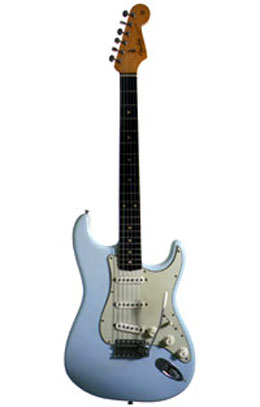 A third eight-measure verse then appears following the same structure as the other two, which is quickly followed by the instrumental section played to the chords of a verse. Since the rhythm of the guitar riff doesn’t alter, this can be more considered as an instrumental break than an actual solo, although the range of the melodic notes does make some interesting reaches. The tambourine playing changes back to its eighth-note shaking rhythm and Ringo still performs his eighth-note accents in the sixth measure even though the title of the song is not heard at that time. What is unmistakably present, however, is four sets of four-part (listen for the low note) harmony “ahh”s that stretch throughout the entire instrumental section. A third eight-measure verse then appears following the same structure as the other two, which is quickly followed by the instrumental section played to the chords of a verse. Since the rhythm of the guitar riff doesn’t alter, this can be more considered as an instrumental break than an actual solo, although the range of the melodic notes does make some interesting reaches. The tambourine playing changes back to its eighth-note shaking rhythm and Ringo still performs his eighth-note accents in the sixth measure even though the title of the song is not heard at that time. What is unmistakably present, however, is four sets of four-part (listen for the low note) harmony “ahh”s that stretch throughout the entire instrumental section.
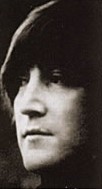 Lennon’s guitar playing on the rhythm track alters to an interesting finger-picking style during this break. It’s quite interesting to note that, while he doesn’t play this pattern in the break during their live performances, he does a similar pattern through the chord changes of each bridge, which sounds very impressive. Lennon’s guitar playing on the rhythm track alters to an interesting finger-picking style during this break. It’s quite interesting to note that, while he doesn’t play this pattern in the break during their live performances, he does a similar pattern through the chord changes of each bridge, which sounds very impressive.
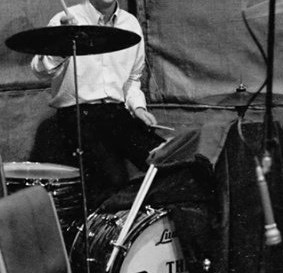 After an identical repeat of the second verse and bridge, the third verse is then repeated, which is nearly identical as well. The only difference here is that Ringo forgets (or here alters for the sake of variation) the eighth-note accents in the sixth measure. After this, a short four-measure conclusion is heard which somewhat copies the introduction. The guitar riff is one and the same but the full band is heard throughout with two three-part “aah” harmonies filling out the landscape. A final suspended chord with crashing cymbal ends the song with a satisfying thud. After an identical repeat of the second verse and bridge, the third verse is then repeated, which is nearly identical as well. The only difference here is that Ringo forgets (or here alters for the sake of variation) the eighth-note accents in the sixth measure. After this, a short four-measure conclusion is heard which somewhat copies the introduction. The guitar riff is one and the same but the full band is heard throughout with two three-part “aah” harmonies filling out the landscape. A final suspended chord with crashing cymbal ends the song with a satisfying thud.
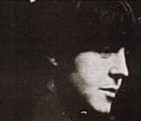 George’s sullen vocals work well with the sentiment of the song and are performed well in pitch. His showcase, of course, is his haunting guitar passages that permeate the entire two-and-a-quarter minutes. McCartney comes up with an interesting but simple bass figure that accentuates the arrangement appropriately without being gaudy, not to mention being easy to play live. Ringo, as always, could be counted on for a steady hand on drums and tambourine, keeping the steady metronome rock beat going with simple fills to accentuate the arrangement. George’s sullen vocals work well with the sentiment of the song and are performed well in pitch. His showcase, of course, is his haunting guitar passages that permeate the entire two-and-a-quarter minutes. McCartney comes up with an interesting but simple bass figure that accentuates the arrangement appropriately without being gaudy, not to mention being easy to play live. Ringo, as always, could be counted on for a steady hand on drums and tambourine, keeping the steady metronome rock beat going with simple fills to accentuate the arrangement.
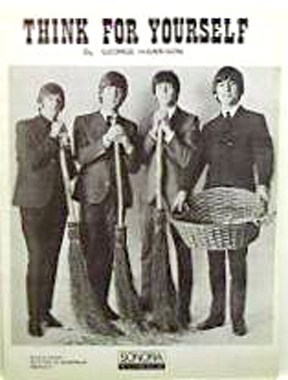 John may not have shown himself very cooperative with Harrison songs on some later occasions, but Lennon is very present here and puts in a concerted effort. His guitar work, while somewhat low in the mix, is done well as is his syncopated singing. We might remember his struggle with this exercise back in February of 1965 with “Tell Me What You See.” Those near-disastrous results have now been refined to perfection, as were his syncopated harmonies on George’s similarly phrased “Think For Yourself,” the next Harrisong to be tackled in November of that year. John may not have shown himself very cooperative with Harrison songs on some later occasions, but Lennon is very present here and puts in a concerted effort. His guitar work, while somewhat low in the mix, is done well as is his syncopated singing. We might remember his struggle with this exercise back in February of 1965 with “Tell Me What You See.” Those near-disastrous results have now been refined to perfection, as were his syncopated harmonies on George’s similarly phrased “Think For Yourself,” the next Harrisong to be tackled in November of that year.
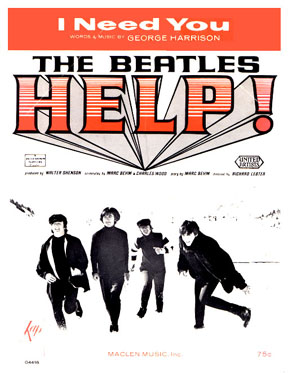 With the exception of the love-lorn romanticism of “I Need You” from earlier that year, George continues his usual quirky spin on relationships with “If I Needed Someone.” The stark reality of Beatlemania seems to be depicted candidly in the lyrics of this song, with girls standing in single-file line for each band member with aspirations to be their next girlfriend or lover. But George just didn’t “need” anyone at this time because he was “too much in love” at the moment. (I’m assuming this would be Patti, since they were married three months later!) But, if he “needed someone to love,” he assures this particular bird: “you’re the one that I’d be thinking of,” quickly reiterating “…if I needed someone” to make sure she doesn’t get her hopes up too high. With the exception of the love-lorn romanticism of “I Need You” from earlier that year, George continues his usual quirky spin on relationships with “If I Needed Someone.” The stark reality of Beatlemania seems to be depicted candidly in the lyrics of this song, with girls standing in single-file line for each band member with aspirations to be their next girlfriend or lover. But George just didn’t “need” anyone at this time because he was “too much in love” at the moment. (I’m assuming this would be Patti, since they were married three months later!) But, if he “needed someone to love,” he assures this particular bird: “you’re the one that I’d be thinking of,” quickly reiterating “…if I needed someone” to make sure she doesn’t get her hopes up too high.
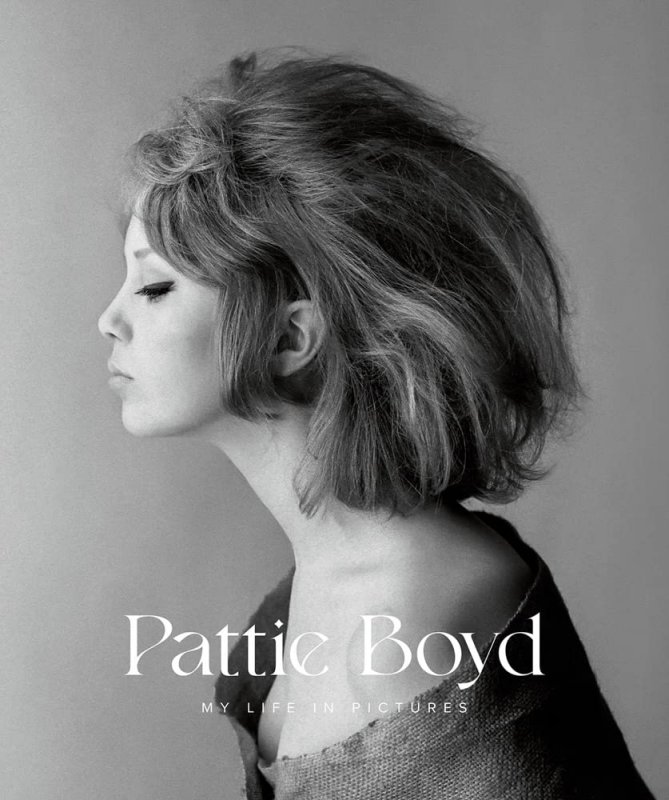 Being unfaithful to who he is in love with doesn’t seem to be much of an issue as he contemplates: “If I had some more time to spend…I’d be with you,” making sure he forthrightly but bluntly includes the phrase “I guess.” She apparently just caught him at a bad time, since “some other day…it might not have been like this.” But he isn’t counting out the future possibility of hooking up with her. He advises her: “Carve your number on my wall and maybe you will get a call from me.” Love comes and goes, you know. With this girl's phone number carved into the wall of his home, there’s a good chance he’ll remember her…unless, of course, many girls are in the habit of carving numbers on his wall. :-) Being unfaithful to who he is in love with doesn’t seem to be much of an issue as he contemplates: “If I had some more time to spend…I’d be with you,” making sure he forthrightly but bluntly includes the phrase “I guess.” She apparently just caught him at a bad time, since “some other day…it might not have been like this.” But he isn’t counting out the future possibility of hooking up with her. He advises her: “Carve your number on my wall and maybe you will get a call from me.” Love comes and goes, you know. With this girl's phone number carved into the wall of his home, there’s a good chance he’ll remember her…unless, of course, many girls are in the habit of carving numbers on his wall. :-)
American Releases
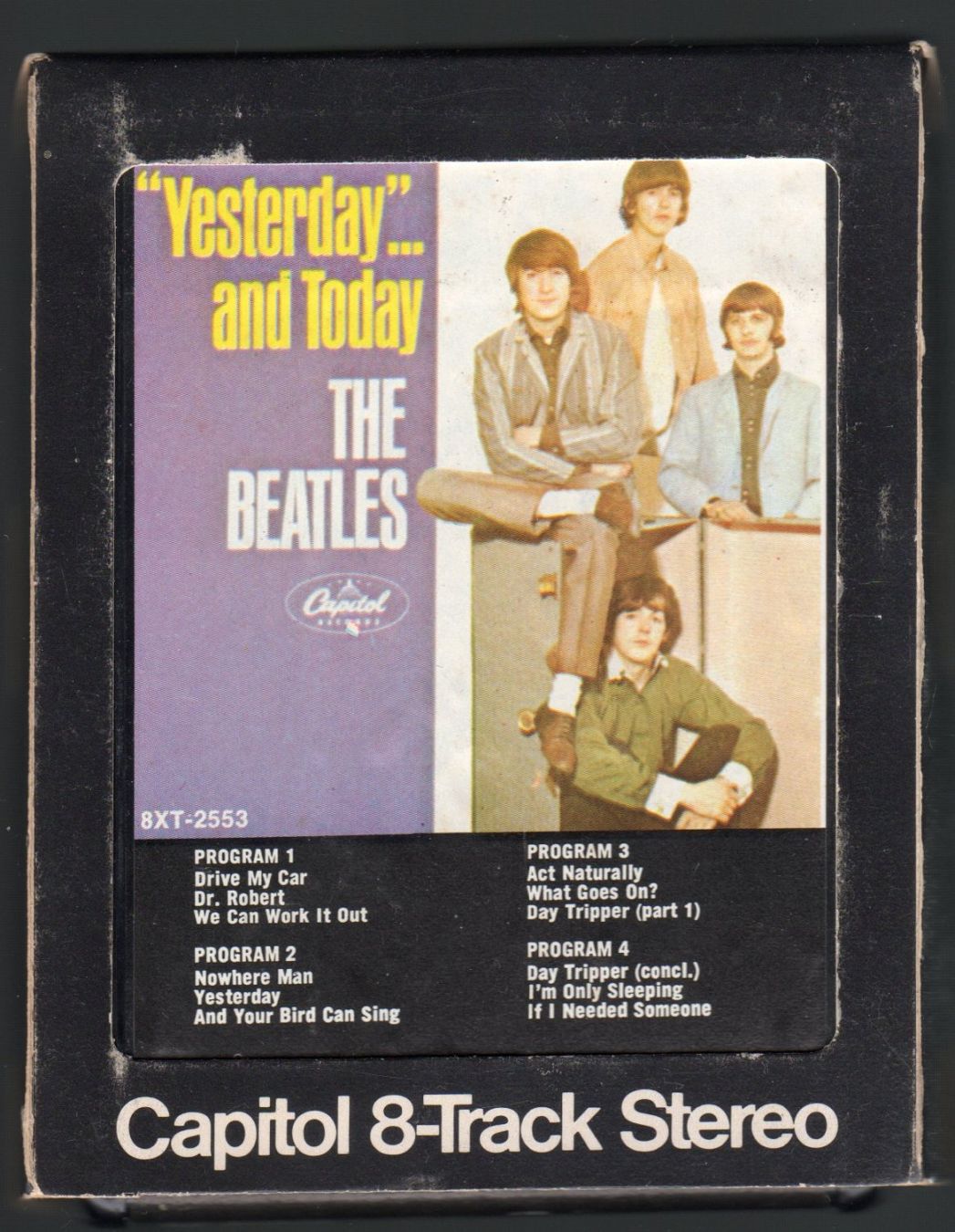 Although the song was recorded back in October of 1965 and was released in Britain on the “Rubber Soul” album in December of that year, “If I Needed Someone” was one of four songs Capitol Records held off of the American release of that album. US audiences didn't hear the song until June 20th, 1966, which was the date of release for the make-shift album “Yesterday…And Today.” Being positioned between “And Your Bird Can Sing” and the ever-popular “We Can Work It Out” made the song stand out much more prominently than it does as the next-to-last song on the British album. "Yesterday...And Today" was then released on January 21st, 2014, as an individual compact disc, both the mono and stereo versions of the album being included on a single CD. Incidentally, this release featured both the "trunk" cover and the "butcher" cover. Although the song was recorded back in October of 1965 and was released in Britain on the “Rubber Soul” album in December of that year, “If I Needed Someone” was one of four songs Capitol Records held off of the American release of that album. US audiences didn't hear the song until June 20th, 1966, which was the date of release for the make-shift album “Yesterday…And Today.” Being positioned between “And Your Bird Can Sing” and the ever-popular “We Can Work It Out” made the song stand out much more prominently than it does as the next-to-last song on the British album. "Yesterday...And Today" was then released on January 21st, 2014, as an individual compact disc, both the mono and stereo versions of the album being included on a single CD. Incidentally, this release featured both the "trunk" cover and the "butcher" cover.
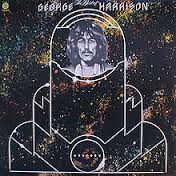 November 19th, 1976 was the next release of the song on the album “The Best Of George Harrison.” While each of the individual Beatles had “greatest hits” packages released the previous year, this was the only one to feature actual Beatles songs in the running order, due to Capitol records having full control of the Beatles catalog at this time. Side one contains seven songs that the guitarist wrote and sang with The Beatles, “If I Needed Someone” being the second. While it only peaked at #31 on the Billboard albums chart, it did become a Gold record. November 19th, 1976 was the next release of the song on the album “The Best Of George Harrison.” While each of the individual Beatles had “greatest hits” packages released the previous year, this was the only one to feature actual Beatles songs in the running order, due to Capitol records having full control of the Beatles catalog at this time. Side one contains seven songs that the guitarist wrote and sang with The Beatles, “If I Needed Someone” being the second. While it only peaked at #31 on the Billboard albums chart, it did become a Gold record.
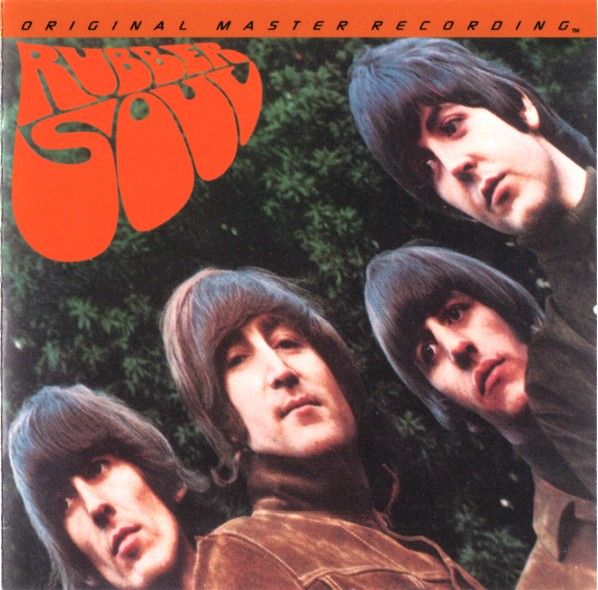 The first time the original British "Rubber Soul” album was made available in America was on the "Original Master Recording" vinyl edition released through Mobile Fidelity Sound Lab in June of 1984. This album, which included "If I Needed Someone," and was prepared utilizing half-speed mastering technology from the original master tape on loan from EMI. This version of the album was only available for a short time and is quite collectible today. The first time the original British "Rubber Soul” album was made available in America was on the "Original Master Recording" vinyl edition released through Mobile Fidelity Sound Lab in June of 1984. This album, which included "If I Needed Someone," and was prepared utilizing half-speed mastering technology from the original master tape on loan from EMI. This version of the album was only available for a short time and is quite collectible today.
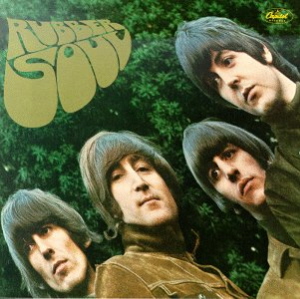 The next release was the compact disc version of the original British “Rubber Soul,” which was released April 30th, 1987, a vinyl edition coming out on July 21st, 1987. The album was then remastered and re-released on CD on September 9th, 2009 and on vinyl on November 13th, 2012. The next release was the compact disc version of the original British “Rubber Soul,” which was released April 30th, 1987, a vinyl edition coming out on July 21st, 1987. The album was then remastered and re-released on CD on September 9th, 2009 and on vinyl on November 13th, 2012.
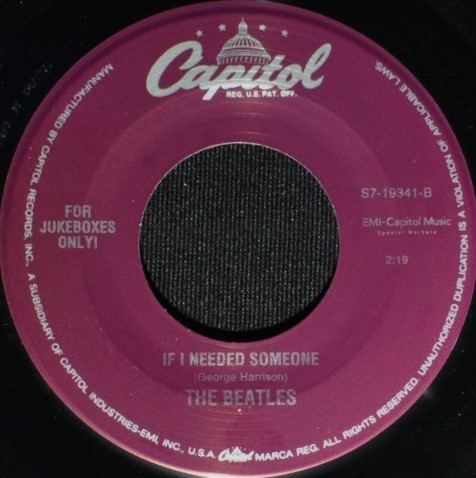 On November 20th, 1995, "If I Needed Someone" was released by Capitol as the b-side to "Norwegian Wood" on a Cema series single "For Jukeboxes Only." Only 1,000 copies were printed on green vinyl, these being made available through "Collector's Choice Music" as a bonus release when you purchased a 1995 sealed set of Beatles albums. Then, on November 12th, 1996, black vinyl copies of this single were printed and released without the Cema designation on the label and with a different catalog number, both of these being quite valuable today. On November 20th, 1995, "If I Needed Someone" was released by Capitol as the b-side to "Norwegian Wood" on a Cema series single "For Jukeboxes Only." Only 1,000 copies were printed on green vinyl, these being made available through "Collector's Choice Music" as a bonus release when you purchased a 1995 sealed set of Beatles albums. Then, on November 12th, 1996, black vinyl copies of this single were printed and released without the Cema designation on the label and with a different catalog number, both of these being quite valuable today.
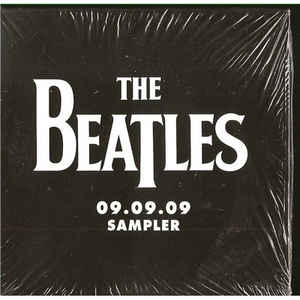 The CD box set “The Beatles In Mono” was released on September 9th, 2009, which features the excellent original mono mix as remastered along with the entire Beatles catalog. Also released on September 9th, 2009, in promotion of the remastered Beatles catalog, the "09.09.09 Sampler" was given to retailers and radio programmers, "If I Needed Someone" being featured therein. The vinyl edition of the box set first came out on September 9th, 2014. The CD box set “The Beatles In Mono” was released on September 9th, 2009, which features the excellent original mono mix as remastered along with the entire Beatles catalog. Also released on September 9th, 2009, in promotion of the remastered Beatles catalog, the "09.09.09 Sampler" was given to retailers and radio programmers, "If I Needed Someone" being featured therein. The vinyl edition of the box set first came out on September 9th, 2014.
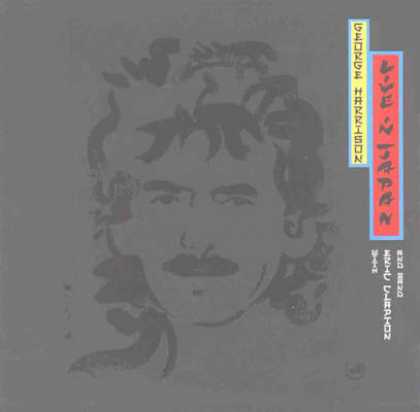 The song also appeared on the George Harrison album “Live In Japan,” which featured a grand total of nine songs he sang during The Beatles years. While this July 13th, 1992 released album wasn’t much of a success in the US (peaking at #126 on the Billboard album chart), it understandably did quite well in Japan (reaching #15). The song also appeared on the George Harrison album “Live In Japan,” which featured a grand total of nine songs he sang during The Beatles years. While this July 13th, 1992 released album wasn’t much of a success in the US (peaking at #126 on the Billboard album chart), it understandably did quite well in Japan (reaching #15).
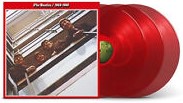 A new 50th Anniversay edition of the compilation album "The Beatles / 1962 - 1966" ("The Red Album") was released on November 10th, 2023. This expanded release included twelve additional songs for a total of 38 tracks, including the new mix of "If I Needed Someone" detailed above, and was made available as a double CD and as a triple vinyl release on both black and red vinyl. A new 50th Anniversay edition of the compilation album "The Beatles / 1962 - 1966" ("The Red Album") was released on November 10th, 2023. This expanded release included twelve additional songs for a total of 38 tracks, including the new mix of "If I Needed Someone" detailed above, and was made available as a double CD and as a triple vinyl release on both black and red vinyl.
Live Performances
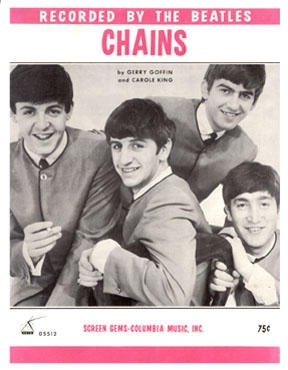 “If I Needed Someone” has the distinction of being the only Harrison composition to have been performed live by The Beatles. Previous George vocal songs performed on stage by the band had been either cover songs (such as “Chains” and “Roll Over Beethoven”) or Lennon / McCartney compositions (such as “Do You Want To Know A Secret” and “I’m Happy Just To Dance With You”). But as of late 1965, George had earned the right to have one of his own songs grace the stages of the Beatlemania world. “If I Needed Someone” has the distinction of being the only Harrison composition to have been performed live by The Beatles. Previous George vocal songs performed on stage by the band had been either cover songs (such as “Chains” and “Roll Over Beethoven”) or Lennon / McCartney compositions (such as “Do You Want To Know A Secret” and “I’m Happy Just To Dance With You”). But as of late 1965, George had earned the right to have one of his own songs grace the stages of the Beatlemania world.
First off, their brief final British tour of December 3rd through 12th of 1965 included it in its eleven song set list. Highlights of this tour included Glasgow, London, Manchester and, on December 5th, their final appearance in their hometown of Liverpool.
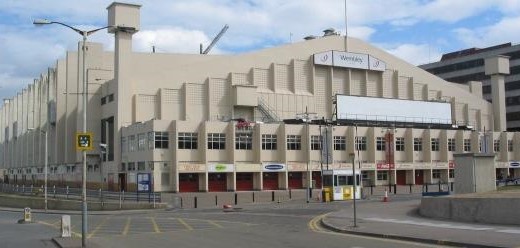 The Beatles' next live appearance was May 1st, 1966 for the “New Musical Express Annual Poll-Winners’ All-Star Concert” at Wembley's Empire Pool. The band only performed five songs for their small portion of the program, George's “If I Needed Someone” being the fourth. While the show was filmed for British TV, a managerial dispute with ABC Television prohibited their performance being filmed so the cameras were turned off when they were on stage. The Beatles' next live appearance was May 1st, 1966 for the “New Musical Express Annual Poll-Winners’ All-Star Concert” at Wembley's Empire Pool. The band only performed five songs for their small portion of the program, George's “If I Needed Someone” being the fourth. While the show was filmed for British TV, a managerial dispute with ABC Television prohibited their performance being filmed so the cameras were turned off when they were on stage.
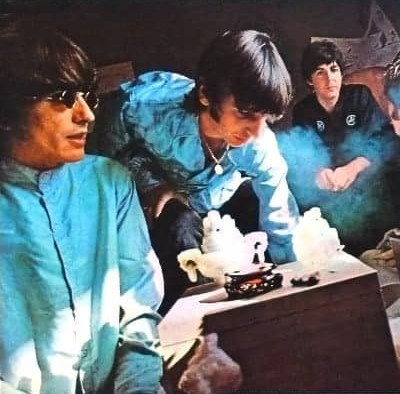 On June 24th, 1966, The Beatles' final international tour commenced, which featured "If I Needed Someone" in a flattering third spot in the eleven song set list. This brief tour, which began with three dates in West Germany, is most famously known for their stops in Japan and The Philippines. By July 4th of that year, this short tour was complete, John swearing that they would “never go to any nut houses again.” On June 24th, 1966, The Beatles' final international tour commenced, which featured "If I Needed Someone" in a flattering third spot in the eleven song set list. This brief tour, which began with three dates in West Germany, is most famously known for their stops in Japan and The Philippines. By July 4th of that year, this short tour was complete, John swearing that they would “never go to any nut houses again.”
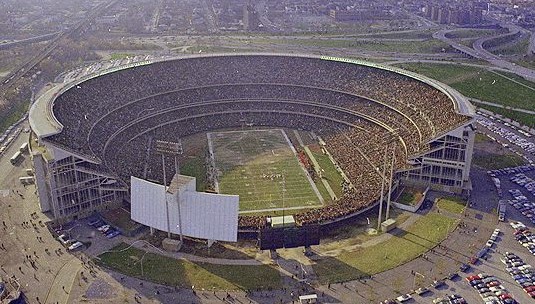 August 12th, 1966 was the start date for their final US tour, which was also their final tour anywhere. Without bothering to rehearse any newly recorded songs, the band set out with the exact same set list as their previous international tour. Therefore, live Beatles' performances of George's “If I Needed Someone” were witnessed in Chicago, Detroit, Cleveland, Cincinnati and Los Angeles among others, even making it to New York City for their triumphant return to Shea Stadium on August 23rd of that year. On August 29th, their final show in San Francisco also included this George Harrison gem. August 12th, 1966 was the start date for their final US tour, which was also their final tour anywhere. Without bothering to rehearse any newly recorded songs, the band set out with the exact same set list as their previous international tour. Therefore, live Beatles' performances of George's “If I Needed Someone” were witnessed in Chicago, Detroit, Cleveland, Cincinnati and Los Angeles among others, even making it to New York City for their triumphant return to Shea Stadium on August 23rd of that year. On August 29th, their final show in San Francisco also included this George Harrison gem.
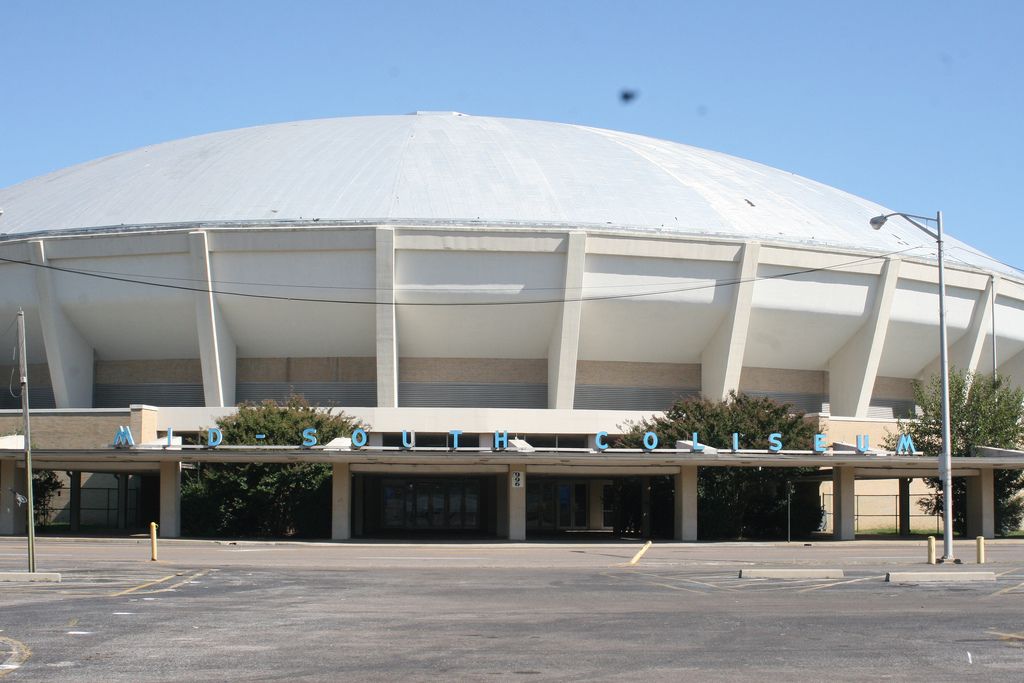 However, during this tour at the second of their August 19th shows at the Mid-South Coliseum in Memphis on 8:30 pm, a cherry bomb exploded on the stage during their performance of "If I Needed Someone." In roadie Mal Evans' diary for that day, he writes, "I could see the four Beatles look at each other to see if either of them was bleeding, thinking for sure somebody had been shot," this panic being precipicated by the group receiving an anonymous phone call earlier that day that one or all of them would be assissinated. As it was, the song, as well as the rest of the performance, continued as planned. On August 29th, 1966, their final show at Candlestick Park in San Francisco also included this George Harrison gem. However, during this tour at the second of their August 19th shows at the Mid-South Coliseum in Memphis on 8:30 pm, a cherry bomb exploded on the stage during their performance of "If I Needed Someone." In roadie Mal Evans' diary for that day, he writes, "I could see the four Beatles look at each other to see if either of them was bleeding, thinking for sure somebody had been shot," this panic being precipicated by the group receiving an anonymous phone call earlier that day that one or all of them would be assissinated. As it was, the song, as well as the rest of the performance, continued as planned. On August 29th, 1966, their final show at Candlestick Park in San Francisco also included this George Harrison gem.
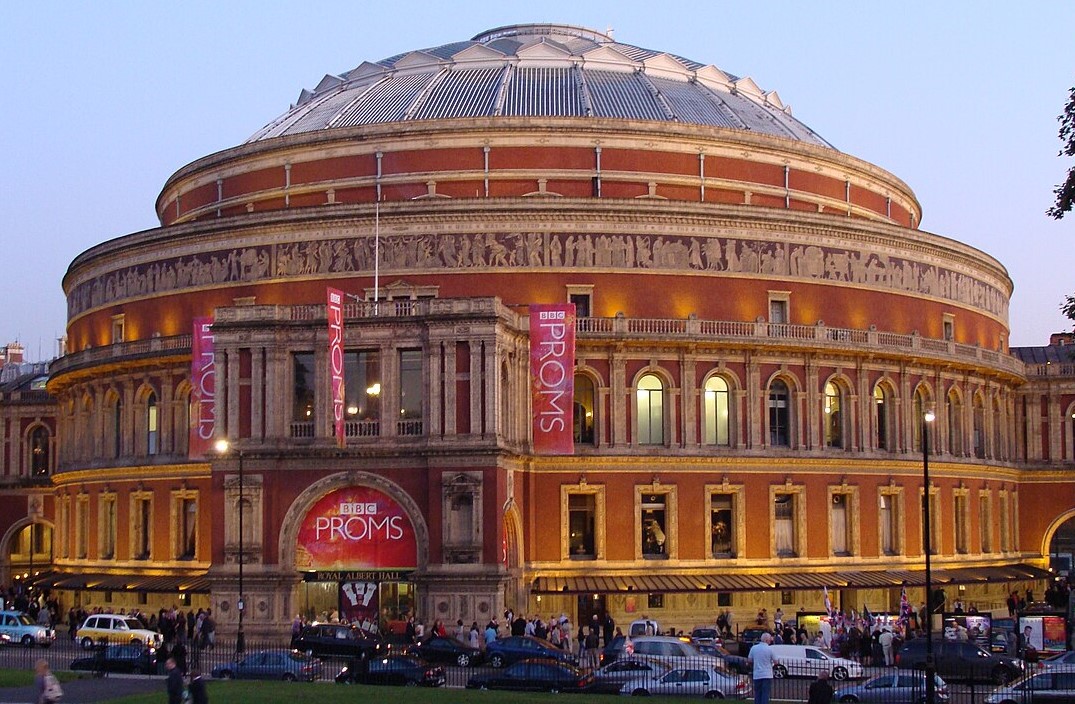 George Harrison was persuaded to return to the concert stage with a brief tour of Japan which stretched from December 1st through 17th, 1991. An extension of the tour came on April 6th, 1992, with one show at London's Royal Albert Hall, this being a benefit for the National Law Party. An exciting set list was featured during this tour that contained a number of his Beatles compositions, including “If I Needed Someone” as well as many others. The tour was well received and reportedly enjoyable for George himself although, with no new album to promote, it was his final tour. George Harrison was persuaded to return to the concert stage with a brief tour of Japan which stretched from December 1st through 17th, 1991. An extension of the tour came on April 6th, 1992, with one show at London's Royal Albert Hall, this being a benefit for the National Law Party. An exciting set list was featured during this tour that contained a number of his Beatles compositions, including “If I Needed Someone” as well as many others. The tour was well received and reportedly enjoyable for George himself although, with no new album to promote, it was his final tour.
Conclusion
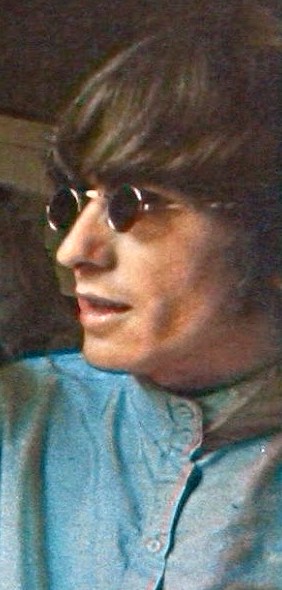 “If I Needed Someone” may not be the first song to come to mind when a fan is asked to name his favorite George Harrison composition in The Beatles catalog. However, up to that point in their history, George reached a songwriting milestone regarding exposure and popularity. With this song reaching the British Top 20 (by The Hollies) as well as being featured extensively in all of their live performances for nearly a year, George's boost in confidence was surely instrumental to his creative output within the band for the next four years. “If I Needed Someone” may not be the first song to come to mind when a fan is asked to name his favorite George Harrison composition in The Beatles catalog. However, up to that point in their history, George reached a songwriting milestone regarding exposure and popularity. With this song reaching the British Top 20 (by The Hollies) as well as being featured extensively in all of their live performances for nearly a year, George's boost in confidence was surely instrumental to his creative output within the band for the next four years.
Song Summary
“If I Needed Someone”
Written by: George Harrison
-
Song Written: August - October, 1965
-
Song Recorded: October 16 & 18, 1965
-
First US Release Date: June 20, 1966
-
-
US Single Release: Capitol Cema #S7-1888-A (green or black vinyl)
-
Highest Chart Position: n/a
-
British Album Release: Parlophone #PCS 3075 “Rubber Soul”
-
Length: 2:19
-
Key: A major
-
Producer: George Martin
-
Engineers: Norman Smith, Ken Scott
Instrumentation (most likely):
-
George Harrison – Lead Vocals, Lead Guitar (1965 Rickenbacker 360-12)
-
John Lennon - Rhythm Guitar (1961 Sonic Blue Fender Stratocaster), Harmony Vocals
-
Paul McCartney - Bass Guitar (1964 Rickenbacker 4001S), Harmony Vocals
-
Ringo Starr – Drums (1965 Ludwig Super Classic Black Oyster Pearl), tambourine
Written and compiled by Dave Rybaczewski
|
IF YOU WOULD LIKE TO MAKE A DONATION TO KEEP THIS WEBSITE UP AND RUNNING, PLEASE CLICK BELOW!
Sign Up Below for our MONTHLY BEATLES TRIVIA QUIZ!
|